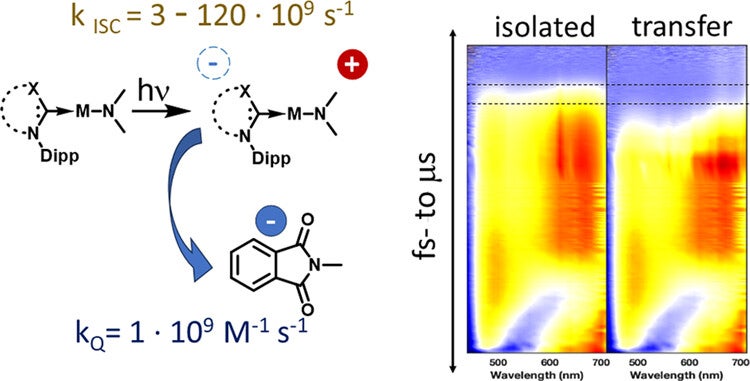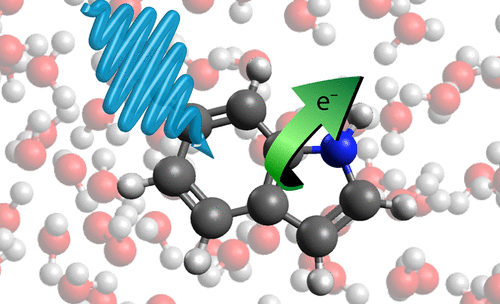Two important papers published this week by the Bradforth group. Take a look at the full list of the group’s publications which are now searchable by tags. (As with our recent JACS paper, both are open access and also have data deposited in an open access repository)
The first paper provides a full spectroscopic journey for light conversion by a carbene-metal-amide (cMa) photosensitizers based on coinage metals. This appears in a virtual special issue on thermally assisted delayed fluorescence (TADF) active systems in the Journal of Physical Chemistry C. Using transient absorption over 9 decades in time we follow the relaxation of a ligand-to-ligand charge transfer state excited with a femtosecond pulse, all the way out to transferring the separated charges to electron and hole acceptors in homogeneous solution. In a collaboration with Mark Thompson’s group at USC and Matt Bird at Brookhaven National Lab, we show the effect of changing central metal and the carbene and carbazole ligands and what it reveals the spin-orbit coupling and singlet-triplet energy gaps in these TADF chromophores. The photostability of certain cMa complexes are demonstrated and photosensitizers based on gold have been shown to produce hydrogen under visible light irradiation.
The second paper, titled “Unraveling the Photoionization Dynamics of Indole in Aqueous and Ethanol Solutions” represents a Herculean effort to fully understand the photodynamics of the intrinsic protein chromophore in tryptophan. Tryptophan fluorescence is routinely studied in biophysical assays and microscopy and the lifetime is known to be sensitive to the local environment, particularly water exposure. But what initially seems simple, a changing quantum yield in water, turns out to reflect rather complex photoionization dynamics that are specific to an aqueous environment. Tom Oliver at the University of Bristol was central to unravelling this problem. Tom will be a sabbatical visitor in the group from October.

